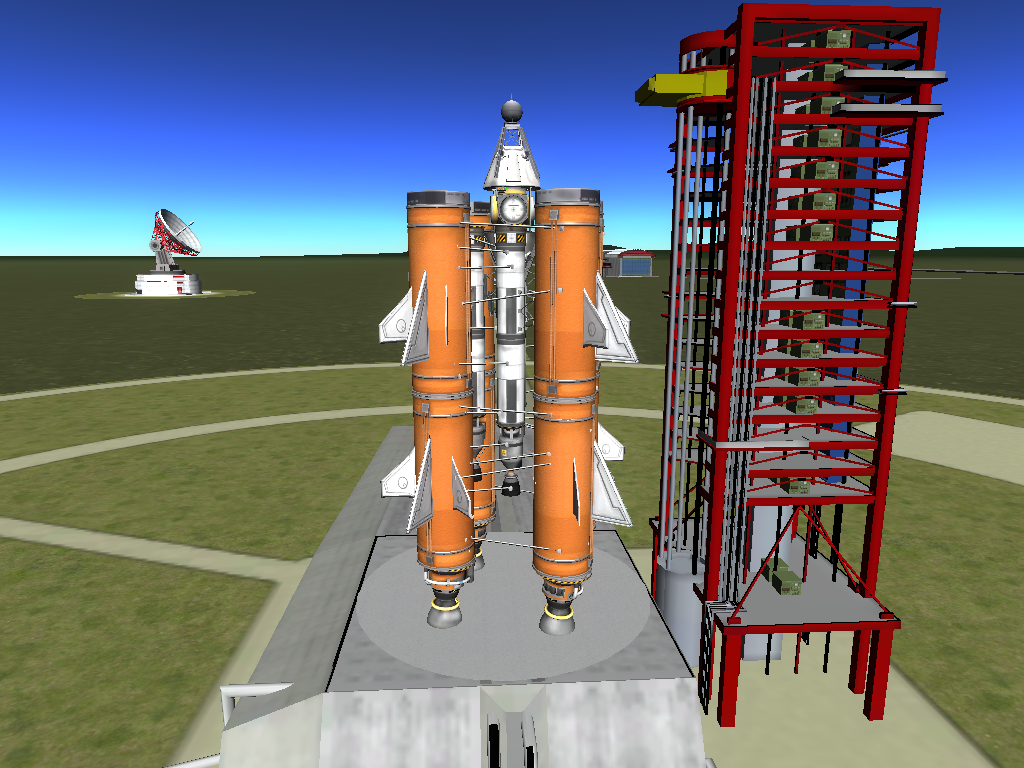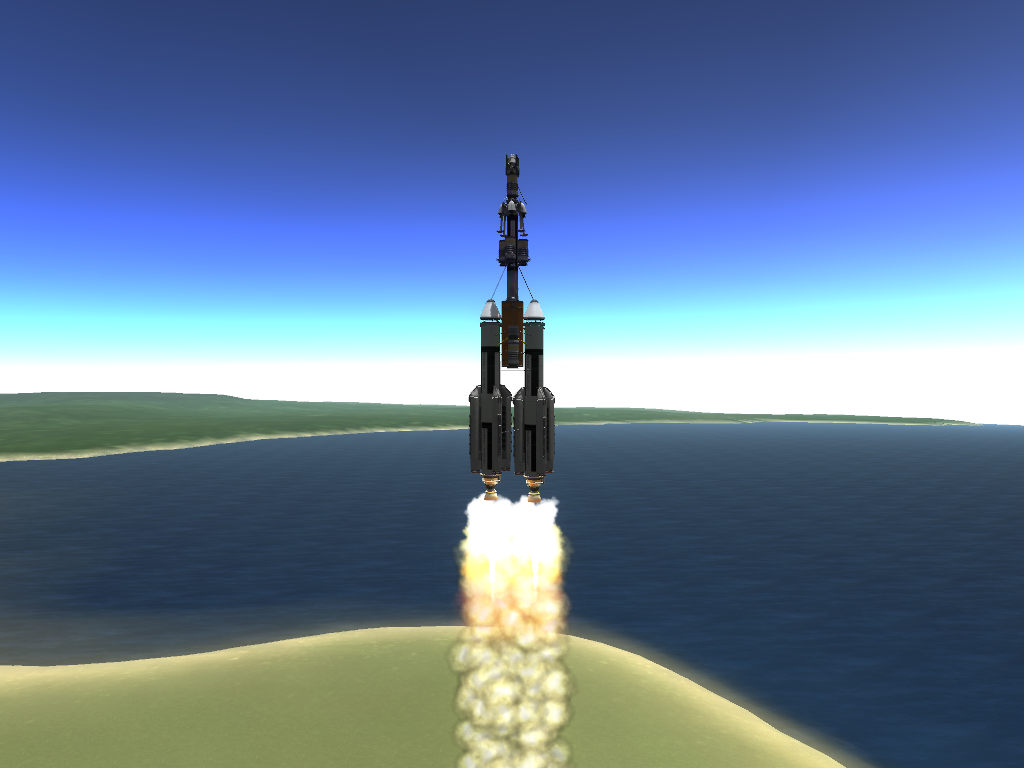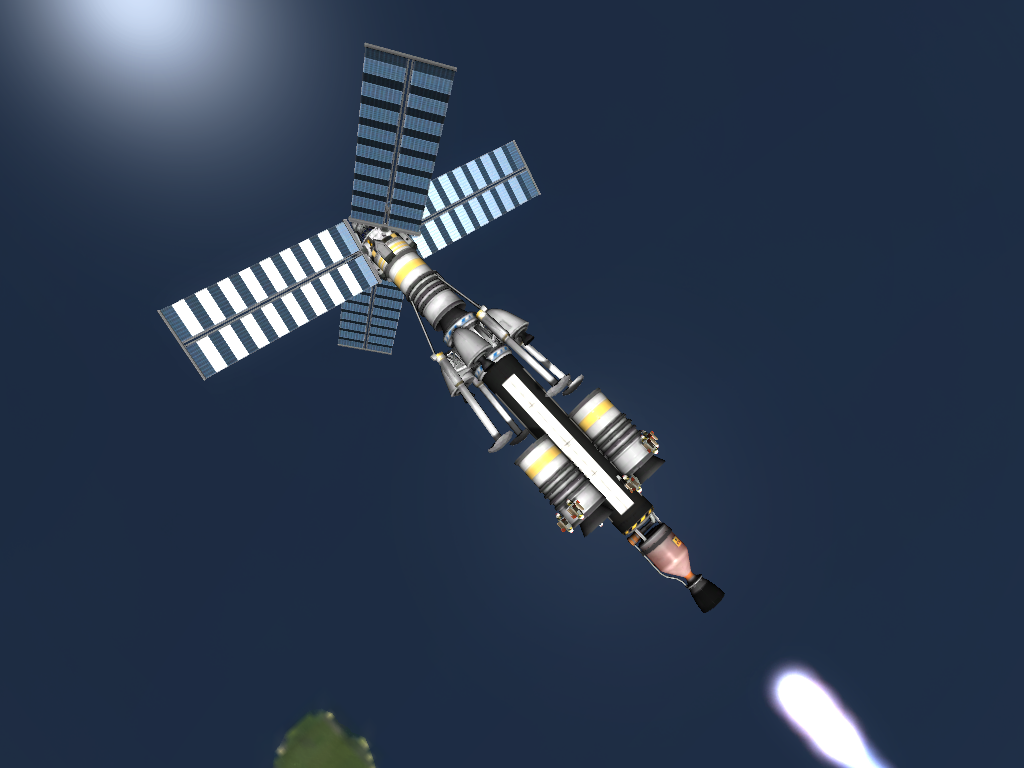@StUffz Du solltest mit mehr selbstgebauten Boostern arbeiten, die haben im Endeffekt mehr Leistung und sind kontrollierbar (insofern, dass man den Schub regulieren oder notfalls auch abschalten kann. Dann sind auch Lasten bis zu 40/50t in den Orbit zu bekommen, bei einem Startgewicht von knapp 350t.
Wie sich gerade gezeigt hast, ist meine LIFTER6-Trägerrakete in der lage eine ~1t Probe nach Duna zu bekommen. Btw die Probe ist erfogreich gelandet.
Die L6 besteht im Wesentlichen aus 4 Stufen, die sich auf einer vertikalen Ebene befinden und permanent Treibstoff über Leitungenzur nächsten Stufe leiten. So überbrückt man die Atmosphäre mit höherer Dichte schnell und verliert ebenso schnell an Gewicht.
Die erste Stufe koppelt sich (abhängig vom Payload) nach etwa 2-3km ab, die zweite Stufe bei etwa 10km. Die dritte Stufe bringt die Rakate dann etwa auf 80km, mit einer AP von bis zu 300km. Nach Abwurf der 3. Stufe zündet erst das Triebwerk der mittleren Stufe.
Diese letzte Stufe der L6 bringt die Last dann in einen Kreisorbit. Hierbei ist wichtig, dass die Last gut mit der letzten Stufe verzurrt ist, da es beim Circulation-Burn gerne zu hohem Druck kommt, bei der die Koppelstelle zum Payload hin überlastet werden kann.
Der L6-Träger arbeitet mit der Asparagus Staging Methode:

Asparagus staging is a method to build very efficient rockets.
The idea is that you create a rocket with a lot of parallel rocket engines with fuel tanks on top of them. All engines ignite at the same time. The trick, however, is that each rocket engine isn't depleting its own tank, but they are all draining their fuel from the two outmost tanks. When these are depleted, the outmost tanks with their engines are decoupled and the next fuel tank takes over which is still completely full. The result is that the rocket always flies with the minimum number of tanks required to transport the fuel it has left while also constantly using all engines it has on board.
This concept can be realized through fuel ducts which connect the stages in the order they will be dropped. It exploits the fact that engines will always take their fuel from the most distant fuel tank available.
The stock vessel "Kerbal X" demonstrates this technique.
http://wiki.kerbalspaceprogram.com/wiki/Tutorial:Asparagus_Staging (Archiv-Version vom 23.04.2013)@mr.jWelche Version spielst du denn? Bei dir sieht das Startbad so anders aus. In der aktuellen Version gibt es diesen Turm daneben gar nicht mehr. (Wurde entfernt, damit auch übergroße Raketen starten können)

















